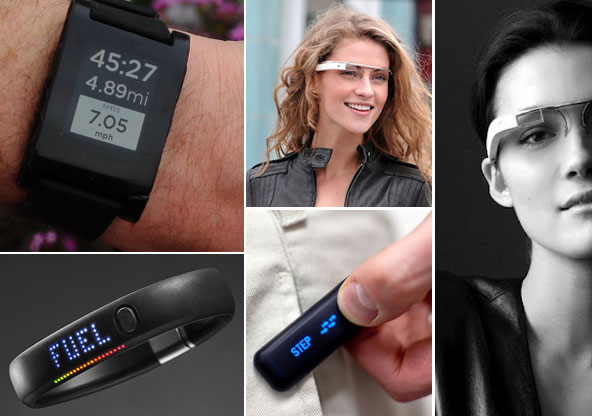Technology

QoTD
A differentiated wearable strategy
Udayakumar Nalinasekaren
Sep 17, 2014

In CES 2014, people found wearables to be a new hot trend. Many companies including biggies like Apple, Google and several other startups want to fit sensors on various parts of the human body and collect data. I have recently read about the t-shirt that can tell an athelete about her willpower or the bra (seemingly in development by Microsoft) that senses emotional triggers for overeating. Almost all these devices use a personal area network to communicate. The typical strategies are to connect to a smart watch or phone for information display, and additionally use the smartphone to send your data to the cloud for reporting and analytics. Apple wants to automatically update patient health records with their new Apple watch. There are other companies that even claim that they have deviced methods to (non-invasively) measure blood glucose levels without blood samples.
Many of these devices are not fully mature. For instance, my Fitbit wrongly counts my drumming activity as steps I walk. I have to get it off my wrist during drumming if have to get my daily step count right. There was a recent report that mentioned that most of these devices transmit your personal details without proper encryption. Anybody snooping around with a promiscuous listening device can find out a lot about you. Marketing folks are drooling thinking about the possibilities around the amounts of vast personal data that is being collected.
Amidst all these experiments, there is an initiative that seemingly has greater sense. The US military is spending $2.9M to develop a suit that helps soldiers.
Soft Robotic Exosuit from Wyss Institute on Vimeo.
Harvard scientists and engineers have been commissioned to pursue this initiative. This suit has sensors and motors that mimic the human muscle arrangement. The sensors help learn deeply about how the muscles work during different actions. The learning is applied to trigger the motors to assist the muscles subsequently during those actions thereby helping the wearer become at ease and more productive.
If successful, this technology can help all crisis situation workers (e.g., fire fighters) and can be a big boon for aged people.
My Artwork
Coming soon...Latest Blog Posts
Coming Soon
Archives
Search



